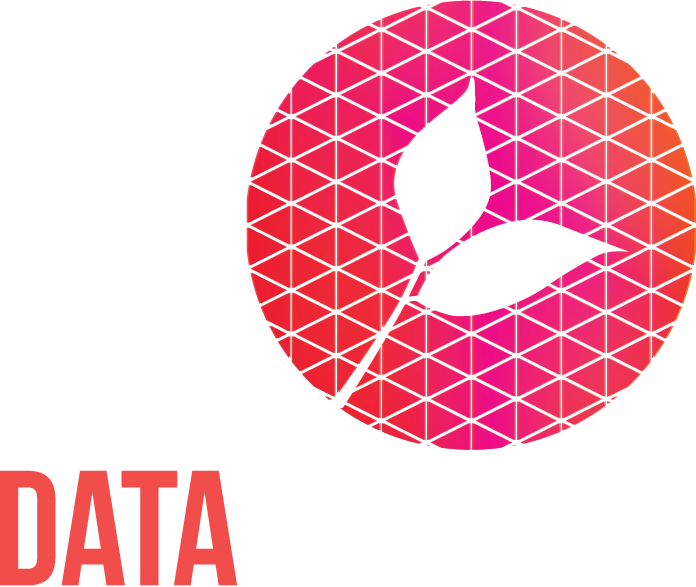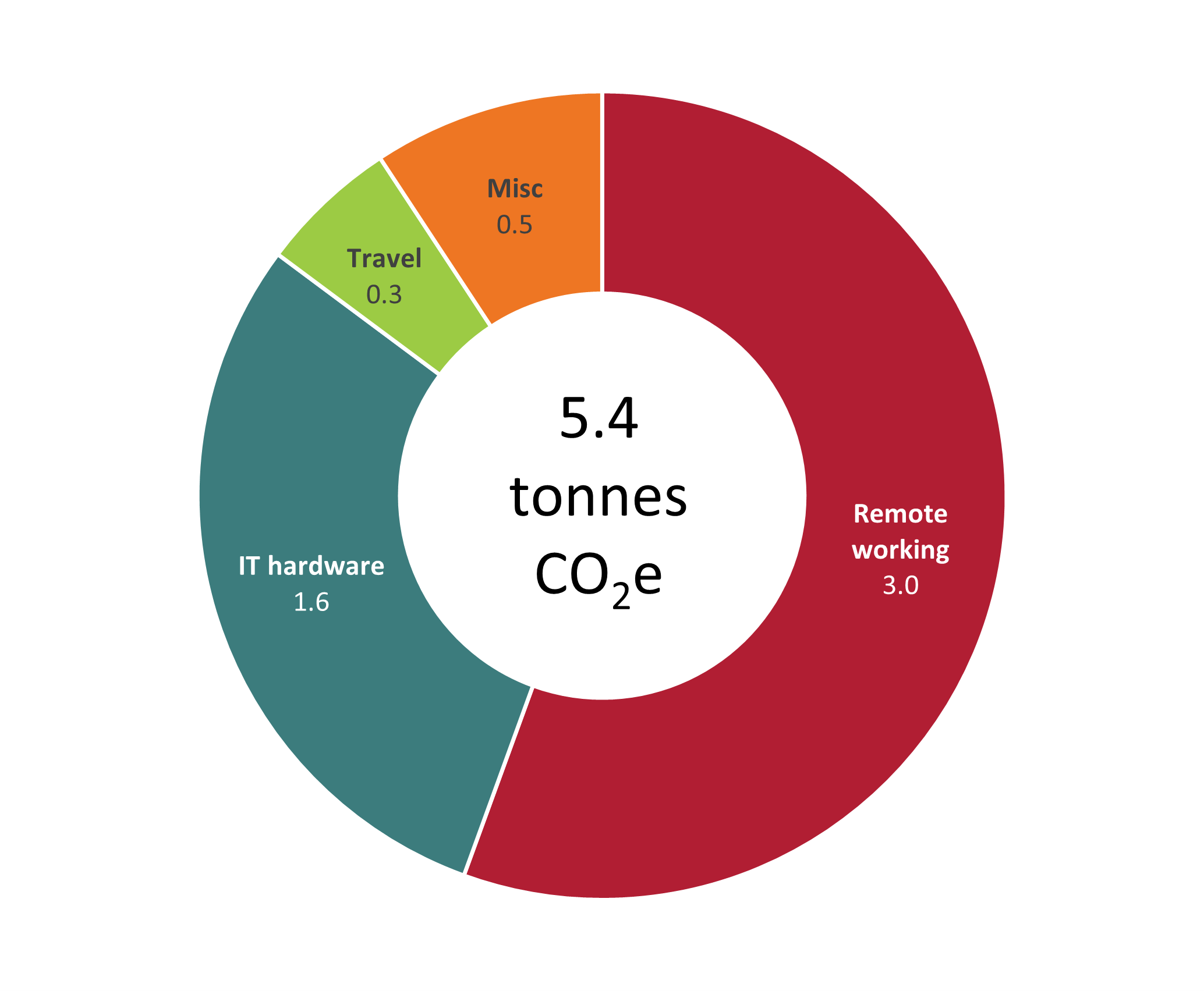Estimating Data Orchard's carbon footprint
At Data Orchard, we are passionate about making the world a better place socially, economically, and environmentally. That means we are committed to ensuring that we meet our needs as an organisation without compromising the ability of future generations to meet their own needs.
As evidence-loving data folk, we recently got stuck into the process of estimating our carbon footprint in order to help us develop our environmental policy and a carbon reduction plan.
What's in a footprint?
Being a small, mostly remote and digital business, the majority of our emissions come from indirect 'Scope 3' sources (as defined by the Greenhouse Gas Protocol). These include the energy used by staff whilst working at home or in a co-working space; business travel; waste disposal; and purchased goods and services, such as IT hardware and cloud storage.
These indirect emissions can be difficult to quantify, but we've done our best to capture them as far as we can.
Remote working
We used Green Element Limited's helpful methodological framework for remote working emissions to estimate our remote working footprint. This incorporates energy use associated with workstations, lighting, and heating, and we added in regular travel for our staff members that use an office or co-working space one or two days a week. With 4 out of 5 of us being on a 100% renewable electricity tariff at home, and all of us generally working either at home or a short distance from it, our overall remote working impact is low. We estimate that remote working accounts for annual emissions of around 3 tonnes CO2 equivalent.
Business travel
We also calculated emissions associated with ad hoc business travel for meetings, events or client project delivery. We primarily travel by train where possible, and our overall emissions associated with train and car transport in the past year were around a quarter of a tonne CO2 equivalent.
IT hardware
The emissions associated with the manufacturing, transport and end of life of IT hardware have not been widely calculated. However, given data that is currently available, we estimate that the footprint of our laptops, mobile phones, and peripherals such as mice and keyboards are around 1.6 tonnes per year. This is based on an estimated three-yearly replacement cycle.
Data storage and communications
This is where things get even more tricky. Many of us will have heard that data centres – where our data actually goes when it floats off into 'The Cloud' – are power-hungry beasts, requiring huge amounts of energy to run servers, hard drives and cooling systems.
We mostly host our data on Box, and Box's primary data centre is powered by 100% renewable electricity. Box also hosts some data with Google (which we use directly for some purposes too), who match 100% of their global, annual electricity consumption with renewable energy and aim to operate on 24/7 carbon-free energy by 2030. In addition, Box hosts some data with Amazon Web Services, who have said they are committed to using only renewable electricity by 2025. It is impossible to know whether any of our data is technically hosted in data centres powered by non-renewables, but ultimately we expect that any emissions resulting from our data hosting via Box and Google should be negligible.
We also have data stored on Basecamp, our project management software. The team at Basecamp have estimated their carbon emissions and offset all current and historic emissions with carbon credits. They state that they are carbon neutral, working towards being carbon negative. Again, we expect that any emissions resulting from our data hosting with Basecamp would be negligible.
We primarily communicate via Basecamp and share files via Box or Google Drive rather than as attachments. As a result, we expect that any impact from sending emails would be minimal.
Miscellaneous
It’s likely that we have some emissions that we haven’t manage to capture in our calculations. To account for these we’re adding 10% of our calculated estimate (0.5 tonnes) of wriggle room on top.
Tallying up
Overall, we estimate that our annual carbon footprint is around 5.4 tonnes CO2 equivalent. As a point for comparison, the average per person annual carbon footprint in the UK is 10 tonnes.
The UK has a commitment to reach 'net zero' across all sectors of the economy by 2050. Net zero means that total greenhouse gas emissions must be equal to or less than the emissions we remove from the environment. For large businesses, the route to net zero is heavily focussed on reducing emissions, before removing or 'offsetting' the remainder. Given that we are already a low-carbon business, our aims will be to continue to minimise our emissions as far as possible; to invest as much as we can in evidence-based carbon reduction and biodiversity restoration schemes; and to promote environmental awareness among our associates, partners, clients and followers.
Next steps
We've created a new environmental policy for Data Orchard that captures the steps we are already taking (and expect staff to take) to help minimise our environmental impacts. In addition, we have come up with a carbon reduction plan to help us reduce our environmental impact going forward.
Some of our next steps include:
Identifying an evidence-based carbon reduction/biodiversity restoration scheme(s) to mitigate for unavoidable carbon emissions (if anyone has recommendations, please do get in touch!).
Continuing to produce annual carbon footprint estimates going forward.
Identifying technological waste recycling procedures and reviewing policies for purchasing new equipment.
Thinking about how we will promote environmental awareness among our associates, partners, clients and followers.
We look forward to keeping you updated as we make progress and would love to hear from other small businesses who are on a similar path.


